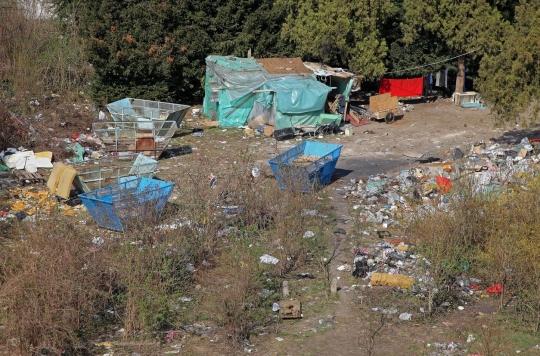About forty children residing in a Roma camp in Méry-sur-Oise, in Val-d’Oise, suffer from lead poisoning, or lead poisoning, reveals a Liberation investigation. What are the symptoms ? Who are the vulnerable people? We take stock.

- According to a survey by “Liberation”, 41 children residing in a slum in Val-d’Oise suffer from lead poisoning.
- Lead poisoning, or lead poisoning, can have serious health consequences for young children and pregnant women.
- Toxic for the central nervous system, for the blood and the kidneys, lead can in particular cause motor and cognitive delay in children.
According to a survey published Friday, September 17 by Release41 children residing in a camp on the Butte de Montarcy in Méry-sur-Oise (Val-d’Oise) suffered from lead poisoning.
Accused in the investigation of having knowledge of this situation “for about ten years” and to have “delayed in reacting”the Île-de-France Regional Health Agency (ARS) announced that two screenings had been carried out in September 2020 and February 2021. The results of the analyzes are instructive: of the 54 children residing in this slum, 41 presented “a threshold above 50µg per liter of blood, i.e. the mandatory reporting threshold” lead poisoning. However, lead poisoning, called lead poisoning, can have serious health consequences, especially for young children and pregnant women.
heavy metal poisoning
Lead is a heavy metal that plays no role in the normal functioning of the body, and is toxic. Its presence always indicates contamination, even in the event of blood lead levels below the value of 50 µg per liter, the threshold which poses the diagnosis of lead poisoning. Today, lead is still found in old paint, in dust, old pipes, etc.
Lead enters the body during respiration or when it is absorbed through the mouth (digestive route) or even transplacentally between a mother and her fetus. It then binds mainly to the bones, from where it is regularly released into the blood, including long after exposure. It is therefore common for the effects of intoxication to manifest themselves years later.
Toxic for the central nervous system, for the blood and red blood cells and for the kidneys, lead is mainly the cause of cases of lead poisoning in children under 6 and in pregnant women. Indeed, in adults, the digestive absorption of lead is low (5 to 10%), but is much greater in young children (40 to 55%).
What are the risks for young children and pregnant women?
As explained Inserm on its website, lead poisoning is particularly dangerous in children. Its most concerning effect “is the decrease in cognitive and sensorimotor performance. A blood lead level of 12 μg/L is associated with a loss of one IQ point, and numerous epidemiological studies have shown an association between blood lead concentration and school-age performance.” A study published in January 2019 demonstrated that the accumulation of lead in the body during childhood would expose you to an increased risk of mental illness in adulthood.
Still according to Inserm, even when the concentrations are low, contamination of the blood with lead can disrupt physical growth and have harmful impacts on the behavior and hearing acuity of young children.
The risk is also high in pregnant women, who can transmit lead to the fetus and complicate the healthy development of pregnancy.
What are the symptoms of lead poisoning?
Lead poisoning is most often silent and its clinical symptoms are few or not very revealing. Most often, it is the context of exposure to lead that allows the diagnosis to be suspected.
In case of suspected poisoning, the symptoms can put on the track: paleness related to anemia, fatigue, headaches, abdominal pain, vomiting, behavioral disorders (hyperactivity, lack of attention, irritability), sleep disturbances…

.
















